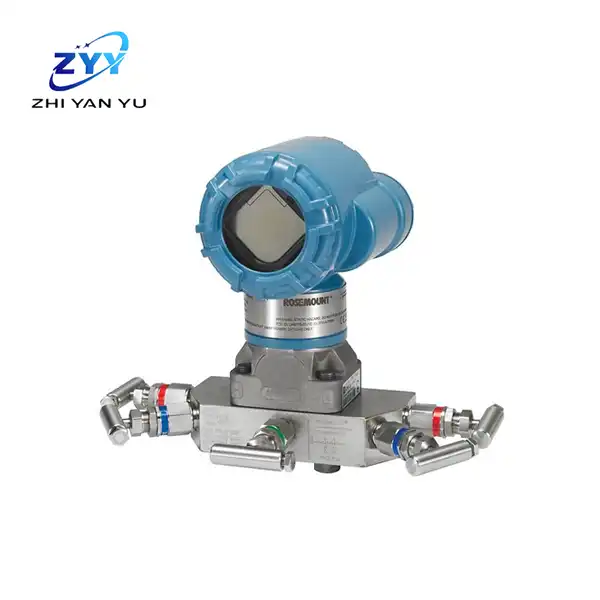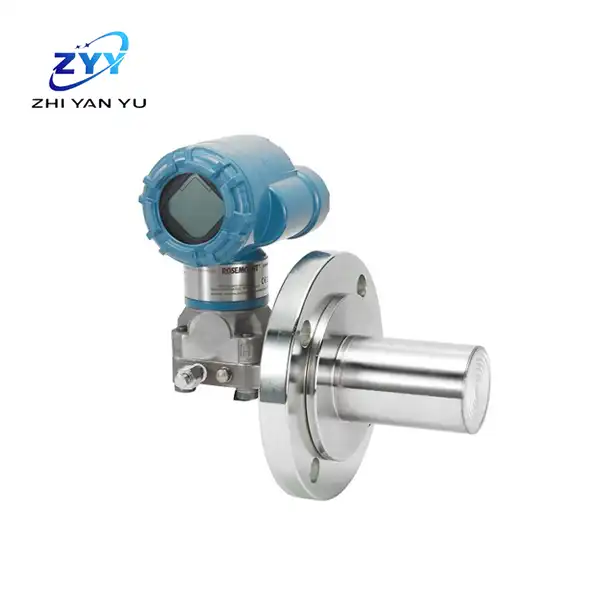Understanding the Rosemount 3051C Coplanar Pressure Transmitter
The Rosemount 3051 coplanar pressure transmitter is a high-performance pressure transmitter designed for a wide range of industrial applications. As a coplanar pressure transmitter, it offers exceptional versatility and ease of installation. But what sets it apart from other pressure measurement devices?
At its core, the Rosemount 3051C utilizes advanced sensor technology to provide accurate and stable pressure readings. The coplanar design allows for multiple process connections on a single plane, making it easier to install and maintain. This design also contributes to its ability to handle differential, gauge, and absolute pressure measurements with equal proficiency.
Key features of the Rosemount 3051C include:
Advanced sensor technology for superior performance
Coplanar flange for versatile installation options
Wide rangeability for various applications
Digital communication protocols for seamless integration
Robust construction for harsh environments
Accuracy Specifications of the Rosemount 3051C
The accuracy of a pressure transmitter is typically expressed as a percentage of the calibrated span or a percentage of the upper range limit (URL). For the Rosemount 3051 coplanar pressure transmitter, the accuracy specifications are impressive:
For the standard accuracy option: ±0.065% of span
For the high accuracy option: ±0.04% of span
For the ultra for flow option: ±0.05% of span
These figures represent the transmitter's ability to measure pressure with minimal deviation from the true value. To put this into perspective, let's consider a practical example:
Imagine you're measuring a pressure range of 0 to 100 psi using a Rosemount 3051C with standard accuracy. The potential error would be ±0.065 psi (0.065% of 100 psi). This level of accuracy is suitable for most industrial applications and exceeds the requirements of many processes.
However, accuracy isn't just about the numbers on the specification sheet. Several factors can influence the real-world performance of a pressure transmitter:
Environmental conditions: Temperature fluctuations, vibrations, and electromagnetic interference can affect accuracy.
Installation quality: Proper mounting and connection of the transmitter are crucial for optimal performance.
Calibration and maintenance: Regular calibration and maintenance ensure the transmitter maintains its accuracy over time.
Process fluid characteristics: The type of fluid being measured can impact the transmitter's performance.
The Rosemount 3051C is designed to mitigate these factors, with features like temperature compensation and robust construction. However, it's essential to consider these aspects when evaluating the transmitter's accuracy in your specific application.
Comparing the Rosemount 3051C to Other Pressure Transmitters
To truly appreciate the accuracy of the Rosemount 3051C, it's helpful to compare it with other pressure transmitters on the market. While there are many excellent options available, the 3051C consistently ranks among the top performers in terms of accuracy and reliability.
Let's compare the Rosemount 3051C with some other popular pressure transmitters:
| Model | Accuracy (% of span) | Key Features |
|---|---|---|
| Rosemount 3051C | ±0.065% (standard), ±0.04% (high accuracy) | Coplanar design, wide rangeability |
| Yokogawa EJA110E | ±0.1% | Multi-sensing technology, high overpressure protection |
| Endress+Hauser Deltabar PMD75 | ±0.075% | SIL2/3 certified, advanced diagnostics |
| ABB 266 Series | ±0.075% | TTG (Through The Glass) technology, wide turndown ratio |
As we can see, the Rosemount 3051C stands out with its high accuracy option, offering superior performance compared to many competitors. However, it's important to note that accuracy is just one aspect of a pressure transmitter's overall performance. Other factors to consider include:
Stability: How well the transmitter maintains its accuracy over time and under varying conditions.
Response time: The speed at which the transmitter can detect and report pressure changes.
Rangeability: The ratio between the maximum and minimum measurable pressures.
Reliability: The transmitter's ability to function consistently without failure.
Ease of use: User-friendly features for configuration, calibration, and maintenance.
The Rosemount 3051C excels in many of these areas, which contributes to its popularity among industrial users. Its coplanar design, for instance, offers flexibility in installation and simplifies maintenance procedures. The transmitter's digital communication capabilities also enhance its usability, allowing for remote configuration and diagnostics.
When selecting a pressure transmitter, it's crucial to consider your specific application requirements. While the Rosemount 3051C offers excellent accuracy, other models might be more suitable depending on factors such as:
The pressure range you need to measure
The specific process conditions (temperature, vibration, etc.)
Compatibility with existing systems and protocols
Budget constraints
Regulatory requirements in your industry
It's always advisable to consult with a pressure measurement expert or the manufacturer to ensure you choose the right transmitter for your needs.
Maximizing Accuracy with the Rosemount 3051C
While the Rosemount 3051C coplanar pressure transmitter offers impressive accuracy out of the box, there are several steps you can take to ensure you're getting the best possible performance:
Proper installation: Follow the manufacturer's guidelines for mounting and connecting the transmitter. Pay attention to factors like impulse line design and process connection type.
Regular calibration: Implement a calibration schedule based on your application requirements and industry standards. This helps maintain accuracy over time.
Environmental protection: Shield the transmitter from extreme temperatures, vibrations, and electromagnetic interference when possible.
Use appropriate ranges: Select a transmitter with a range that closely matches your process requirements. Operating in the middle of the transmitter's range typically provides the best accuracy.
By following these best practices, you can ensure that your Rosemount 3051C continues to deliver the high level of accuracy it's designed for.
Applications Benefiting from the Rosemount 3051C's Accuracy
The exceptional accuracy of the Rosemount 3051C coplanar pressure transmitter makes it suitable for a wide range of industrial applications. Some areas where its precision is particularly valuable include:
Flow measurement: When used with differential pressure flow meters, the 3051C's accuracy translates to precise flow calculations.
Level measurement: In tank level applications, accurate pressure readings are crucial for inventory management and process control.
Custody transfer: The high accuracy of the 3051C makes it suitable for applications where precise measurement is required for billing or regulatory purposes.
Critical process control: In industries like pharmaceuticals or fine chemicals, where small variations can have significant impacts, the 3051C's accuracy is invaluable.
Energy management: Accurate pressure measurements contribute to efficient energy use in steam systems and other utilities.
Safety systems: The reliability and accuracy of the 3051C make it suitable for use in safety instrumented systems (SIS).
These applications highlight the versatility of the Rosemount 3051C and underscore the importance of accurate pressure measurement in various industries.
Conclusion
In answer to our initial question, "How accurate is the Rosemount 3051C?", we can confidently say that it ranks among the most accurate pressure transmitters available in the market today. With accuracy ratings as high as ±0.04% of span, it offers exceptional performance that meets the demands of even the most critical applications.
The rosemount coplanar pressure transmitter combines this high accuracy with a range of features that enhance its usability and reliability. Its coplanar design, digital communication capabilities, and robust construction make it a versatile solution for a wide range of industrial pressure measurement needs.
However, it's important to remember that achieving and maintaining this level of accuracy requires proper installation, regular calibration, and adherence to best practices in use and maintenance. When these conditions are met, the Rosemount 3051C proves to be a powerful tool for precise pressure measurement, contributing to improved process control, increased efficiency, and enhanced safety in industrial operations. If you want to get more information about this product, you can contact us at lm@zyyinstrument.com.



